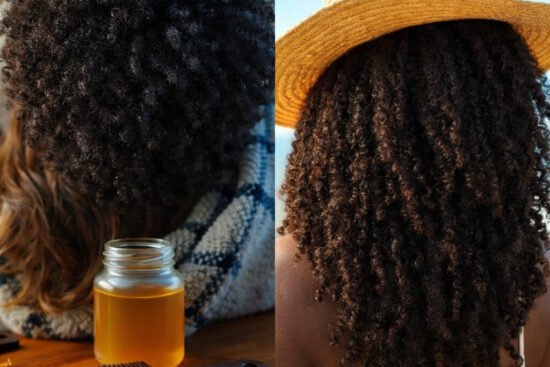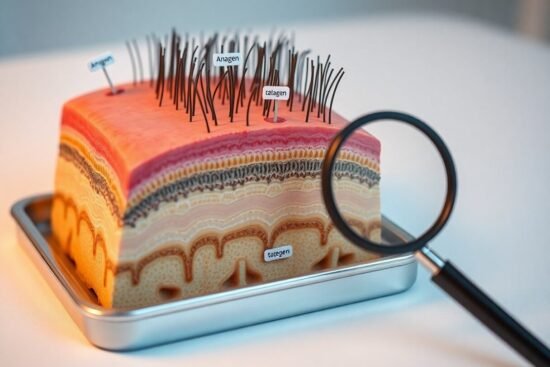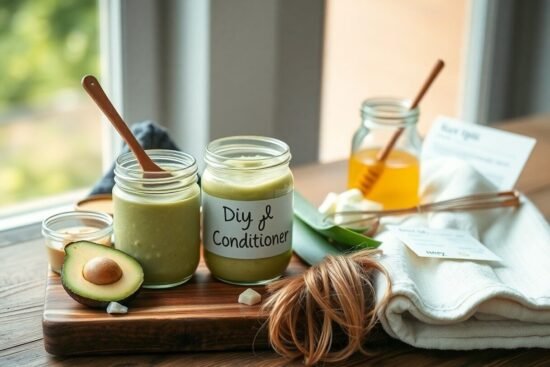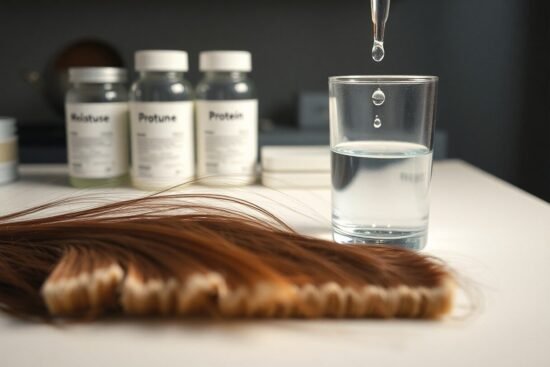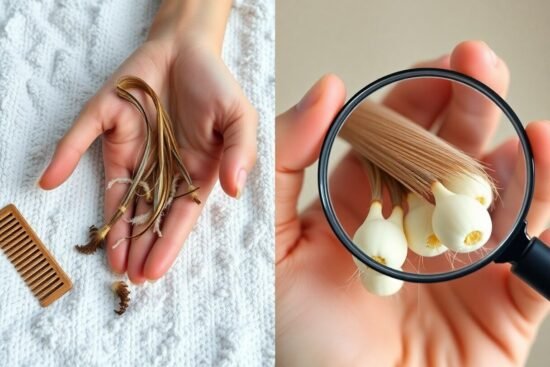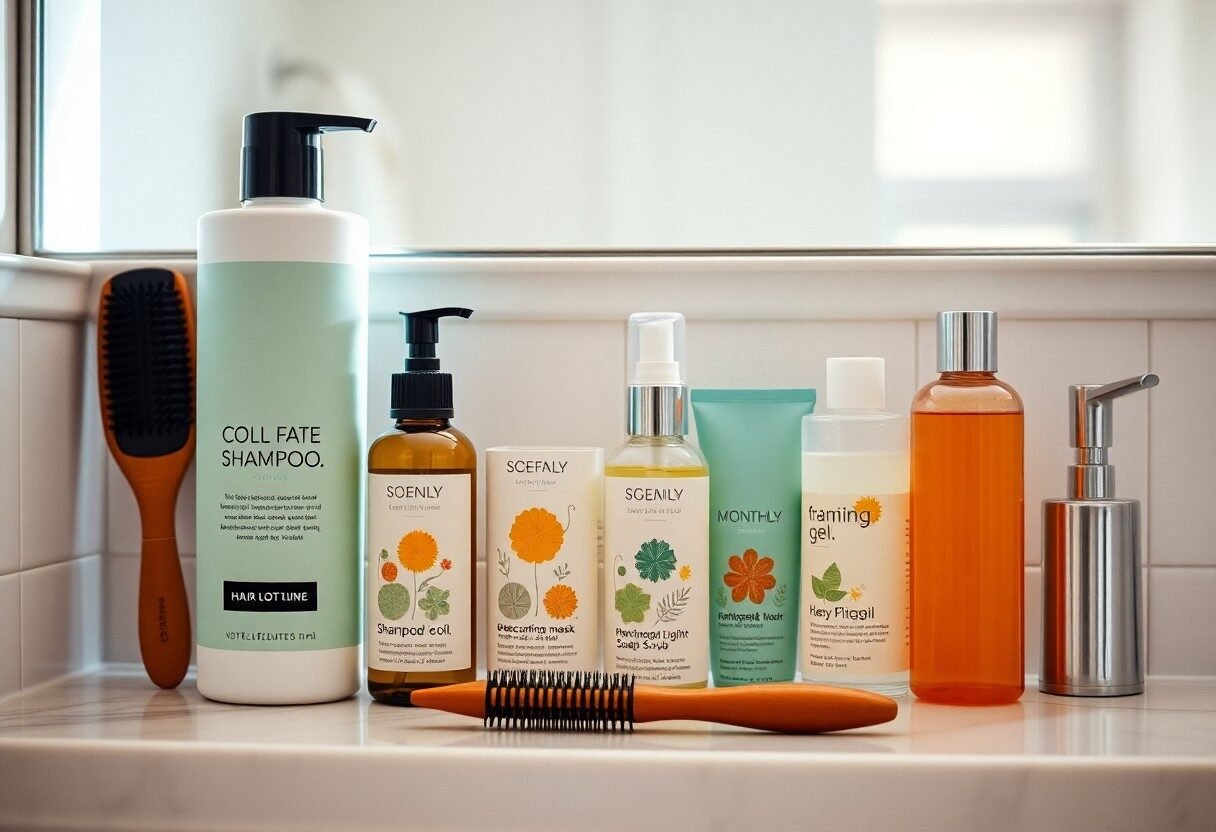
Most people underestimate the significance of a tailored hair care regimen. By establishing a consistent routine, you can address specific hair concerns, enhance overall health, and even mitigate damage from environmental factors. In this post, I’ll share the crucial steps to create a balanced hair care routine that encompasses daily, weekly, and monthly practices. Whether your hair is wavy, curly, or straight, finding the right regimen will help you achieve the lustrous locks you desire.
Key Takeaways:
- Establish a daily hair care routine that suits your hair type, which may include cleansing, conditioning, and moisturizing.
- Incorporate a weekly treatment such as a deep conditioning mask or scalp exfoliation to boost hair health and maintain moisture levels.
- Adjust your hair care products based on seasonal changes, as weather can significantly affect hair texture and moisture retention.
- Incorporate heat protectants and minimize heat styling to prevent damage and breakage during your daily regimen.
- Consider a monthly trim to remove split ends and promote healthy hair growth, adapting the frequency based on growth rate and hair condition.
- Pay attention to your hair’s response to products and make changes as needed, as individual needs can vary greatly.
- Hydration is key; ensure you’re drinking enough water daily, as this impacts not only overall health but also the look and feel of your hair.
Daily Essentials for Healthy Hair
Incorporating imperative daily routines into your hair care regimen can dramatically enhance its health. Consistency is key when it comes to nurturing and maintaining vibrant hair. For most, this means a reliable cleansing, conditioning, and scalp care routine that caters to your specific hair type. Focusing on these daily imperatives not only contributes to the overall appearance of your hair but also promotes your scalp’s well-being, setting a solid foundation for hair growth and strength.
Cleansing Techniques: Finding Your Perfect Shampoo
Your choice of shampoo plays a pivotal role in hair health; it’s not a one-size-fits-all solution. Different hair types require different cleansing methods, so identifying your hair’s specific needs—whether you have oily, dry, or color-treated hair—can drive your shampoo selection. For instance, I prefer sulfate-free shampoos for gentle cleansing, which help preserve your natural oils while effectively removing buildup.
Conditioning Choices: Deep vs. Lightweight Options
Choosing the right conditioner also influences the health of your hair. Lighter conditioners and deep conditioning masks serve different purposes—while lighter options are ideal for daily use, deep conditioners provide intensive hydration. Typically, I opt for a lightweight conditioner for everyday nourishment, reserving deep conditioning treatments for weekly pampering sessions.
Deep conditioners are formulated with richer ingredients and are imperative for severely dry or damaged hair, employing ingredients such as keratin, oils, and proteins to restore moisture levels. On the other hand, lightweight conditioners maintain moisture balance during daily washes without weighing hair down. Ultimately, alternating between these options based on your hair’s current needs is key in achieving optimal results.
Scalp Care: The Foundation of Hair Health
A healthy scalp is a prerequisite for healthy hair. By regularly exfoliating and treating your scalp, you can improve circulation and create an environment conducive to hair growth. I find it effective to incorporate a scalp massage using oils or specialized treatments that nourish the follicles and promote overall scalp health.
The scalp is often overlooked in hair care, but it harbors vital blood vessels and follicles. A balanced pH and proper hydration can deter common issues like dryness or irritation. Integrating scalp care strategies like regular cleansing and moisture infusion into your routine not only invigorates hair growth but also contributes to less flaking, dandruff, and the overall resilience of your mane.
Weekly Rituals for Strength and Shine
Integrating weekly rituals into your hair care routine enhances your strands’ strength and shine. I recommend earmarking one day each week for a deep conditioning session or scalp treatment. Doing so not only rejuvenates your hair but also creates a moment of self-care where you can indulge and focus on overall well-being. From nourishing masks to exfoliating scrubs, these weekly practices ensure that your hair remains healthy and vibrant, avoiding damage from daily wear and tear.
Exfoliating: The Importance of Scalp Scrubs
Scalp scrubs are a game-changer for maintaining a healthy scalp environment. Exfoliating once a week removes buildup and dead skin cells, freeing hair follicles to breathe and promoting new growth. This process can significantly enhance scalp circulation, leading to healthier, shinier hair.
Treatment Masks: Nourishing with Ingredients that Matter
Investing time in treatment masks filled with beneficial ingredients like keratin, argan oil, or aloe vera can transform your hair texture. These masks penetrate the hair shaft, providing deep hydration and restoring imperative nutrients. I suggest a mask rich in vitamins and oils to restore luster and minimize frizz.
For optimal results, apply the mask to damp hair, focusing on the ends, which tend to be drier. Leave it in for 20-30 minutes—this duration allows the nutrients enough time to work their magic. Products containing natural oils—like coconut or jojoba—are excellent for dry hair, while protein-infused masks help strengthen strands, making them less prone to breakage.
Styling Frequency: Balancing Products and Tools
Styling frequency greatly influences the health of your hair. Adjusting how often you heat style or apply chemical products is vital; I recommend limiting these practices to just a couple of times a week, depending on your hair type and condition. Too much frequent styling can lead to dryness and damage.
An easy way to strike a balance is to use heat protectants and moisturizing products before styling. Choose quality tools designed for heat styling, as they are often gentler on your hair. Note, the goal is to protect your strands while still achieving your desired look, so understanding your hair’s response to various treatments and styles is key to maintaining overall health.
Monthly Maintenance for Long-Term Benefits
Monthly maintenance is crucial for achieving long-term hair health and vitality. Incorporating specific practices into your routine can dramatically affect your hair’s overall condition and appearance. From trims to specialized treatments, these monthly rituals help to maintain not only the aesthetic appeal of your strands but also their strength and resilience against daily wear and tear.
Hair Trims: Why Regular Cuts Are Key
Scheduling regular hair trims is vital for maintaining healthy locks. Even a small trim of just half an inch every six to eight weeks can significantly reduce split ends and promote growth, giving your hair a full, polished look. The less damage on the ends means your hair stays stronger, ultimately enabling you to grow your mane longer and healthier.
Color Care: Protecting Vibrancy with Specialized Products
Color-treated hair necessitates specialized care to preserve its vibrancy and shine. Utilizing shampoos and conditioners formulated specifically for color-treated hair can help prevent fading and extend the life of your hue. Additionally, look for products containing UV protection to guard your strands against sun damage.
For example, using sulfate-free shampoos helps to avoid stripping color while also maintaining moisture balance. I love products that contain ingredients like argan oil or keratin, as they hydrate while reinforcing the hair structure. Implementing a regular deep conditioning mask once a month can further seal in color and enhance vibrancy, making your hair look salon-fresh for weeks on end.
Professional Treatments: When to Seek Expert Help
Recognizing when to turn to a stylist for professional treatments is crucial for optimal hair care. If you notice excessive dryness, breakage, or a loss of texture, it might be time to book a deep conditioning treatment or bond-builder session. These in-salon services often utilize advanced techniques and products to restore health, resulting in hair that feels revived and rejuvenated.
In my experience, professional treatments such as Olaplex or Brazilian Blowouts provide a noticeable transformation and can provide a much-needed boost to damaged hair. It’s wise to consult with your stylist about scheduling these treatments based on your individual hair needs and lifestyle, ensuring that your locks maintain their vibrancy and strength month after month.

Seasonal Adjustments: Adapting to Environmental Changes
Environmental factors greatly influence your hair care regimen, requiring seasonal adjustments to maintain optimal health and appearance. Changes in temperature, humidity, and sunlight can alter your hair’s needs, leading to damage or dryness if not addressed. Recognizing these shifts and tailoring your products and practices accordingly ensures that your hair remains vibrant throughout the year.
Summer Strategies: Protecting from Sun and Humidity
During summer, heightened temperatures and humidity levels can lead to frizz and sun damage. I protect my hair by using a leave-in conditioner with UV protection and opting for lightweight, hydrating products. Wearing hats or scarves shields my hair from direct sun exposure while keeping moisture locked in, ensuring I enjoy the season without sacrificing my strand’s health.
Winter Care: Combatting Dryness and Static
Winter presents unique challenges as indoor heating and cold winds strip moisture from my hair, leaving it dry and prone to static. To combat these issues, I switch to richer, more moisturizing shampoos and conditioners. Weekly deep conditioning treatments also help restore hydration, making hair manageable and sleek despite the cold.
In winter, I’ve found that incorporating a humidifier into my living space makes a significant difference. Moist air helps restore lost hydration, while using a deep conditioning mask at least once a week provides an extra layer of protection. I also recommend limiting heat styling tools, as excessive heat can worsen dryness. Opting for air-drying methods or lower heat settings can preserve hair’s natural moisture balance.
Hair Health Myths: Debunking Common Misconceptions
Many misconceptions regarding hair care can lead to ineffective practices. For instance, the myth that trimming hair makes it grow faster can mislead many. In reality, regular trims help eliminate split ends, but don’t affect the rate of hair growth, which is determined by genetics and health.
Another prevalent myth is the belief that washing hair daily is necessary for cleanliness. In truth, daily washing can strip natural oils, resulting in dryness. For most hair types, washing every two to three days is sufficient. Understanding these myths empowers you to make informed decisions about your hair care routine, leading to healthier, more resilient strands overall.
Building a Personalized Hair Care Routine
Developing a personalized hair care routine involves understanding your unique needs and adapting products and techniques to suit them. Begin by evaluating the condition of your hair and what it demands – from cleanse to conditioning techniques. Tailor your regimen by choosing products that cater to your specific concerns such as dryness, breakage, or oiliness. By considering your individual hair goals, you’ll set the foundation for a regimen that truly works for you.
Assessing Your Hair Type: Customization Based on Texture
Determining your hair type is pivotal in customizing your regimen. Whether your hair is straight, wavy, curly, or coily, each texture has distinct needs for moisture, styling, and maintenance. For example, fine hair might require lightweight products that won’t weigh it down, while thick, coarse hair often benefits from richer, more hydrating formulations. When you align your products and practices with your hair’s unique texture, you pave the way for healthier, more manageable locks.
Lifestyle Considerations: Time-Saving Tips for Busy Individuals
Your daily routine heavily influences how much time you can dedicate to hair care. For busy individuals, it’s key to devise a hair care plan that fits seamlessly into your schedule. Invest in multi-functional products, like leave-in conditioners or 2-in-1 shampoos and conditioners, that streamline your process. Additionally, consider setting aside specific times during your week for more intensive treatments to ensure your hair still receives the attention it needs. Thou can still have fabulous hair without compromising your time.
- Multi-functional products help streamline your regimen.
- Set designated treatment times for deep hair care.
- Quick styling techniques can save time on busy mornings.
- Batch cooking hair treatments can also ease your schedule.
- Thou may achieve great hair without excessive effort.
For those with hectic schedules, multitasking is your best friend. Incorporating hair treatment masks while cooking or doing household chores allows you to maximize your time. Additionally, consider hairstyles that require minimal styling, such as braids or buns, to give your hair a break while still looking polished. This way, I find that I can maintain my hair’s health while navigating a busy lifestyle.
Tracking Progress: Establishing a Routine Review
Establishing a routine review of your hair care regimen aids in tracking your progress and making necessary adjustments. Every few weeks, assess how your hair responds to your routine and note any changes in texture, moisture levels, or overall health. By keeping a hair diary, you can pinpoint effective practices, identify areas for improvement, and modify products as needed, ensuring your regimen continues to meet your evolving needs.
Regularly reviewing your hair care routine allows for tailored adjustments based on the results you observe. I recommend taking before-and-after photos, noting changes in shine, frizz, or volume. This visual documentation can be incredibly helpful in noticing long-term trends, helping you to refine your approach and ensure your regimen remains aligned with your goals. Tracking progress can lead to significantly improved hair health on your journey.
Final Words
Drawing together the elements of a hair care regimen, I’ve learned that consistency is key to achieving healthy hair. By establishing daily, weekly, and monthly routines tailored to your hair type and needs, you can maintain its strength and vibrancy. I encourage you to take the time to understand your hair, adjust your practices as needed, and enjoy the journey to beautiful locks. With dedication and mindfulness, you can transform your hair care routine into a nurturing ritual that enhances your overall well-being.
FAQ
Q: What should be included in a daily hair care routine?
A: A daily hair care routine typically includes gentle cleansing with a sulfate-free shampoo, conditioning with a suitable conditioner, and applying leave-in conditioner or a hair serum to maintain moisture. It’s also beneficial to avoid heat styling and instead opt for protective styles to minimize damage. Additionally, using a wide-tooth comb to detangle wet hair can help prevent breakage.
Q: How often should I wash my hair?
A: The frequency of washing hair varies depending on hair type and personal preference. Generally, those with oily hair may wash every day, while people with dry or curly hair might find washing 1-2 times a week is sufficient. Listening to your hair’s needs and observing how it reacts to different washing schedules can help you determine the right frequency.
Q: What is the purpose of a weekly hair care routine?
A: A weekly hair care routine is designed to provide deeper nourishment and repair to the hair and scalp. This can include treatments like deep conditioning masks, hot oil treatments, or clarifying shampoos to remove product buildup. Weekly routines help address any specific issues such as dryness, frizz, or lack of shine, promoting overall hair health.
Q: Do I need to use a heat protectant when styling my hair?
A: Yes, using a heat protectant is highly advisable whenever you style hair with heat tools. Heat protectants create a barrier between the hair and the heat, helping to minimize damage and maintain moisture levels. Look for products specifically designed for your hair type, and apply them to clean, dry hair before using styling tools.
Q: What should I aim to do on a monthly basis for my hair care?
A: Monthly hair care should include a more intensive treatment, such as a stylist-led protein treatment or a haircut to remove split ends and damaged sections. Additionally, assessing your hair’s overall health during this time can guide you in making adjustments to your routine, such as changing products or incorporating new treatments.
Q: How can I determine the best products for my hair type?
A: Understanding your hair type is the first step in selecting products. Consider factors such as porosity, texture (straight, wavy, curly), and thickness. Consult resources like hair type quizzes, or ask a professional stylist for recommendations tailored to your hair needs. Testing products in smaller sizes can help you find what works best without making a big financial commitment.
Q: How can I maintain healthy hair while using coloring or chemical treatments?
A: If you frequently color or chemically treat your hair, it’s imperative to use products designed for chemically treated hair. Incorporate regular deep conditioning treatments to restore moisture, schedule touch-up appointments as needed, and limit the use of heat styling tools to prevent further damage. Additionally, consider a bond-building treatment to help strengthen hair after chemical services.






